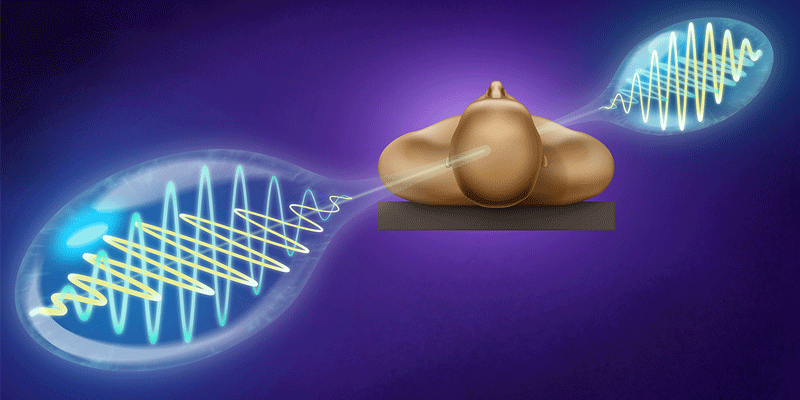Quantum entanglement could improve disease detection
York researchers bring disease detection using quantum entanglement a step closer

A team of researchers at York's School of Physics Engineering and Technology have made an important step towards exploiting quantum entanglement to improve detection of disease.
Their work, now published in Physical Review Letters could see improvements to Positron Emission Tomography (PET) scans - currently medical professionals’ most popular tool in diagnosing cancer and Alzheimer’s disease.
Professor Daniel Watts led the project. He explained how his team’s work could improve next generation PET imaging : “PET scans are the leading clinical modality to identify cancer and diagnose Alzheimer’s disease,” he said. “The patient is injected with a biologically active compound, such as a sugar, labelled with a radioactive isotope. The isotope emits a positron which annihilates to give two gamma photons, initially going in opposite directions, which are picked up by detectors surrounding the patient to form the image.”
“However, only a small fraction of the PET photons fall into this category - most scatter in the patient or the PET apparatus before reaching the detector. Many recent efforts and technological advances in PET have aimed to better remove the contributions from these ‘junk’ scatter events, which in traditional methodologies spoil the PET image.”
Professor Watts says his team has shown, through measurements using a PET detector apparatus as well as quantum theory developments, that these ‘junk’ events would actually provide a rich seam of quantum information.
The new methods exploit how the PET photons are created in a quantum entangled state, meaning the way one interacts immediately influences the other, even when at large separations. The new work shows this quantum entanglement is surprisingly robust, largely surviving the typical photon scattering processes occurring for the ‘junk’ events.
The finding opens up new possibilities to train artificial intelligence and machine learning networks to utilise the inherent quantum information in the (currently discarded) ‘junk’ events. As these are typically more numerous than the ‘good’ PET events there are exciting possibilities to increase diagnostic sensitivity and reduce the necessary radiation dose to the patient.
Dr Julien Bordes carried out the key computer simulation aspects in the new work. He said: “It is exciting to be part of a new result with such impact for fundamental physics and potential for societal applications. I hope that the new opportunities will enable improvements in future PET imaging.”
And Dr Jamie Brown, who carried out the experimental measurements, said: “Measuring the entanglement for the scattered photons was a real challenge experimentally - it is great the data can confirm fundamental quantum theory. I’m excited for the next stage.”
Professor Watts said: “The robustness of the quantum entanglement between the PET photons came as a real surprise. Now we understand this quantum entanglement on a more fundamental basis the exploitation of quantum information in PET is finally coming within reach.”